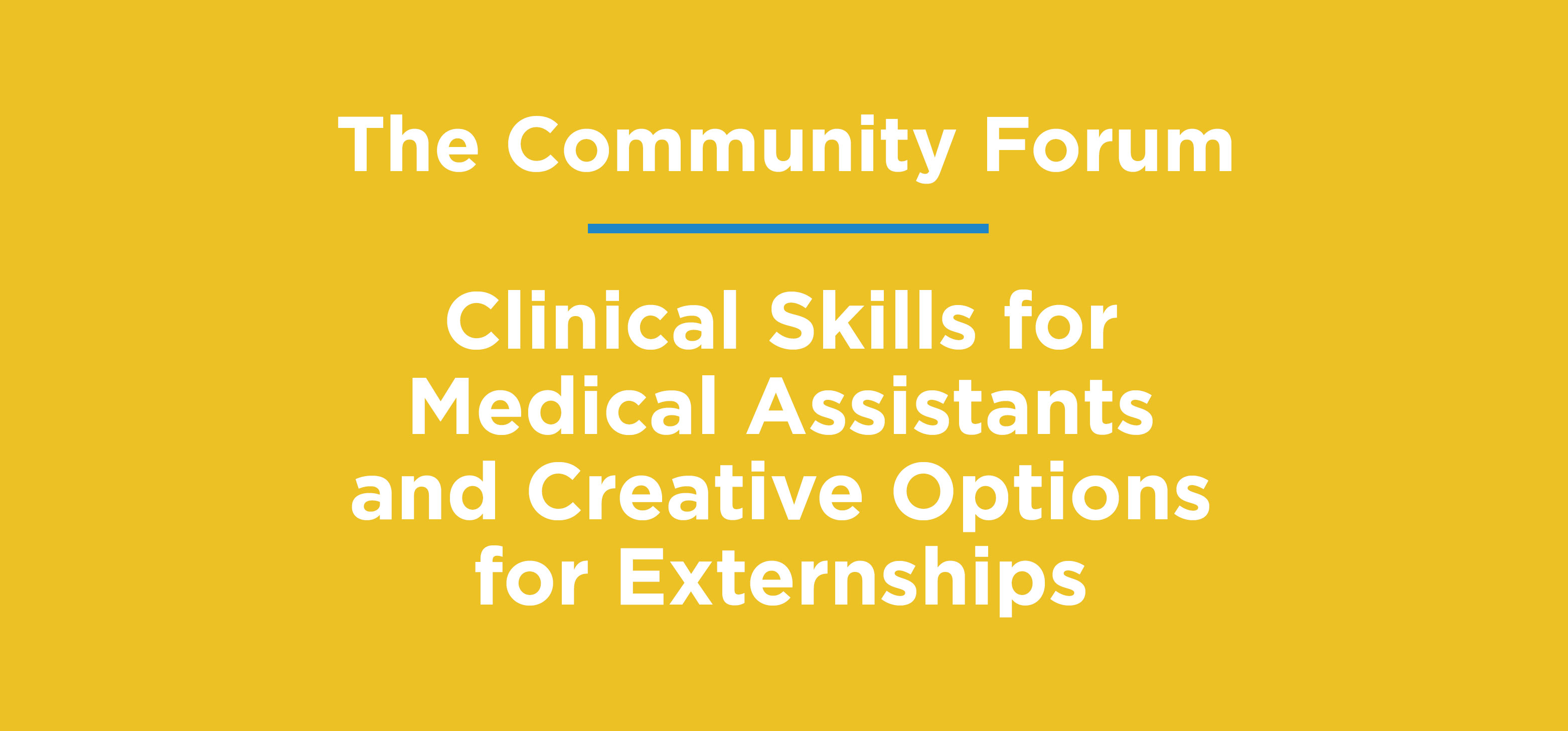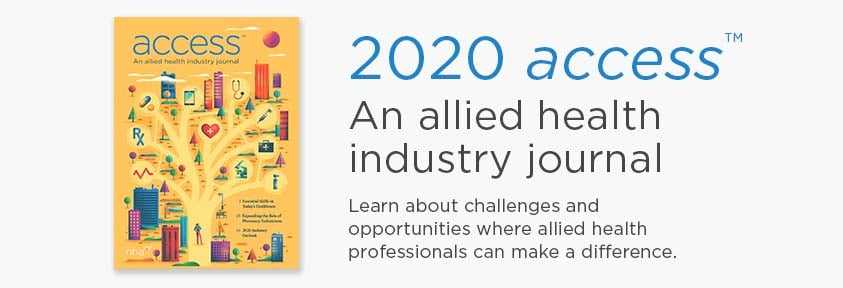A panel of higher education leaders joined together for an online forum to discuss how they are adjusting in the educator space to teach both simulation and externship skills and objectives during the time of COVID-19.
A few key takeaways are summarized below. Be sure to watch the full video at the end of this post to hear more about how these leaders have adapted for this summer session and what to expect for the upcoming fall semester.
Community Connect Forum Key Takeaways
Engagement
How do we engage students in a virtual environment?
Many educators are moving to online platforms such as Zoom to hold lectures, but the transition has come with some challenges. Online review games, such as Jeopardy, can help keep students engaged. To help overcome technology barriers such as internet access—which has been the biggest issue many schools face—community partnerships that offer free wifi have helped keep students connected.
Enablement
What tools and resources are being used to take the place of clinical skills, labs, etc.?
Schools have quickly adopted simulation-based training to teach skills such as injections, taking vital signs, EKG, etc. Students and teachers have enjoyed this learning method, and some commented that this technology is here to stay, even when in-person classes resume, because they've been impressed by their effectiveness. To help prove that students have learned vital clinical skills in this online format, many educators have students self-record themselves performing skills in order to be graded.
Experience
How do we get students externship or on-the-job training with the current restriction in place?
Employers are inconsistent in this area. Some places are welcoming and still hosting externship students (typically larger employers), while others are not taking any during the pandemic. In addition to a lack of availability, some students are also uncomfortable entering a healthcare environment, particularly if they have an at-risk family member. Providing choices for students can help offset these challenges. Alternatives can include projects such as dynamic case studies that show competency in clinical skills and soft skills, role-playing, video peer review, and transfer of volunteer experience.
Essential SkillsAre there any skills gaps that you are seeing among students due to the change in learning environments?
There was already a critical need for soft skills in healthcare, but that need has persisted and perhaps been heightened by the shift to online learning. Just like simulations can help teach essential clinical skills, simulations such as PersonAbility™ can help students develop essential soft skills through the use of virtual humans.
Employability
What is the employment outlook for new graduates entering the workforce?
Just like the availability of externships varies, demand for healthcare workers depends on many factors. Some places of heightened demand due to COVID-19, while others are facing layoffs. Fortunately, we are seeing support from government agencies in the form of funding, tuition reimbursement, grants, etc., to help prepare the next generation of healthcare workers and support the allied health professional.
Meet the Panelists
A big thank you to the presenters and panelists, who come from a diverse range of education systems, for sharing valuable information and insights.
Jessica Langley, MS, Executive Director of Education and Advocacy
Molly Yeske, MS, CCMA, Program Director/Instructor, Lake Land College
Shelle Ridings, CMA (AAMA), Medical Assisting and HIMC Program Coordinator, Lewis and Clark Community College
Wendy Davenport, RN, Health Science Instructor, Walker County Center of Technology
Tricia Berry, PhD, MATL, Associate Dean and Director, Clinical and Practicum Programs, Purdue Global
Watch the Video




